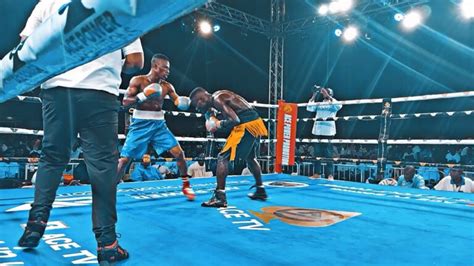Explore the rich history, cultural influences, major events, and future trends in boxing worldwide with insights on key organizations and styles.Boxing is more than just a sport; it is a dynamic cultural phenomenon that has evolved across various countries, each contributing its unique flair and history to the ring. In our exploration of the global boxing scene, we will delve into the rich traditions that define this sport in different nations, the key organizations championing its growth worldwide, and how local cultures shape distinct boxing styles. From iconic boxing events that draw crowds and headlines to emerging trends that promise to shape the future of the sport, this article offers a comprehensive country-by-country overview that celebrates the art of boxing. Whether you’re a die-hard fan or a curious newcomer, join us as we navigate the captivating world of boxing on a global scale.
Exploring The Rich History Of Boxing In Various Countries
Boxing, one of the oldest competitive sports in the world, has a rich history that varies significantly from country to country. In this section, we will delve into the unique boxing narratives and traditions that define the sport across different cultures.
In Exploring The evolution of boxing, we must start with ancient origins. The sport’s roots can be traced back to ancient civilizations such as the Greeks and Romans, where it was featured in the Olympic Games and was often a brutal affair. These early forms of boxing laid the groundwork for the modern iterations we know today.
In the United States, the rise of boxing was intertwined with social dynamics, emerging from the streets as a way for marginalized communities to gain recognition and respect. The early 20th century saw legendary figures like Muhammad Ali and Joe Louis transcend the sport, becoming cultural icons and influencing the societal landscape.
Across the Atlantic, the United Kingdom has its distinct boxing heritage, often characterized by the tradition of bare-knuckle fighting, which evolved into the regulated sport we see now. The establishment of rules and weight classes in the 19th century helped formalize boxing, leading to the founding of organizations like the British Boxing Board of Control.
Latin American countries, particularly Mexico, have a passionate boxing culture known for its fierce rivalries and the rise of legendary boxers such as Julio César Chávez and Canelo Álvarez. Mexican boxing is celebrated for its unique styles and the deep community ties that bring support and pride to local fighters.
In Asia, boxing has seen significant growth in recent years, particularly in countries like the Philippines and Thailand. The Philippines produced notable champions like Manny Pacquiao, who not only excelled in the ring but also became a national figure, showcasing the sport’s ability to unite and inspire.
Each country’s boxing history reflects its cultural narratives, triumphs, and tribulations. By Exploring The evolution of boxing worldwide, we uncover the rich tapestry that connects us, highlighting the sport’s ability to transcend borders and resonate deeply within societies. Through this historical lens, we can better appreciate the diverse narratives that shape the boxing community today.
Key Boxing Organizations Promoting The Sport Globally
Boxing has become a globally recognized sport, thanks in large part to several key organizations that oversee its regulations, promote events, and maintain the integrity of competition. Here’s a look at some of the most prominent boxing organizations playing a crucial role in shaping the landscape of the sport.
- World Boxing Association (WBA): Established in 1921, the WBA is the oldest and one of the most respected boxing organizations in the world. It is responsible for sanctioning fights, recognizing champions, and ensuring fair play in the sport globally.
- World Boxing Council (WBC): Founded in 1963, the WBC is known for its rigorous standards and has been influential in promoting the sport’s popularity. This organization awards the iconic green championship belt and organizes significant fights across various weight classes.
- International Boxing Federation (IBF): Since its inception in 1983, the IBF has gained recognition for its emphasis on fighter safety and has partnered with various organizations to improve the welfare of boxers worldwide. It is considered one of the four major governing bodies alongside the WBA, WBC, and WBO.
- World Boxing Organization (WBO): Established in 1988, the WBO has carved a niche for itself in the boxing community, with its belt being highly sought after by fighters. The organization is known for its strong international presence and regular sanctioning of championship fights.
- Association of Boxing Commissions (ABC): While not a sanctioning body for bouts, the ABC plays a vital role in regulating boxing across different jurisdictions in the United States and Canada. It works to standardize rules and regulations, ensuring a consistent approach to the sport.
These organizations not only promote boxing but also contribute to its evolution through various initiatives, enhancing global interest in the sport. By exploring the functions and contributions of these key bodies, enthusiasts can better appreciate the organized structure that supports boxing at all levels.
Exploring The Influence Of Culture On Boxing Styles
Boxing is not just a sport; it is a reflection of cultural identities shaped by historical, social, and economic factors. Each country has its unique take on boxing, influenced by local traditions and values. This Exploring The influence of culture on boxing styles reveals the nuances that make boxing a diverse and rich sport worldwide.
For instance, in Mexico, boxing is often linked to national pride and resilience. Mexican boxers frequently employ aggressive styles characterized by relentless pressure, utilizing a close-range technique and formidable grappling abilities. This fighting style can be attributed to the cultural significance of lucha libre wrestling, which emphasizes showmanship and toughness.
In contrast, Japanese boxing, known for its technical precision and discipline, reflects the country’s cultural values of respect and honor. The emphasis on training and rigorous discipline in Japanese martial arts translates into boxing, where fighters often demonstrate intricate footwork and defensive skills, complementing their offensive strategies.
Similarly, in the United States, boxing has evolved from its origins in bare-knuckle brawling to a highly commercialized sport. The American boxing style tends to be more dynamic, often blending various techniques drawn from different cultures, including the footwork and agility from boxing legends such as Muhammad Ali, combining with the brawler tactics from fighters like Mike Tyson.
Moreover, countries like Thailand showcase the influence of Muay Thai, where elbow and knee strikes inform their boxing techniques. The cultural heritage surrounding Muay Thai brings a unique approach to boxing that emphasizes fluidity, balance, and the incorporation of multiple striking techniques.
Overall, Exploring The impact of cultural influences reveals that boxing styles vary widely across the globe, compelling each nation to contribute its unique flair to the sport. This not only enriches the boxing scene as a whole but also fosters a deeper understanding of the connections between sport and identity.
Major Boxing Events To Attend Around The World
Boxing fans always look forward to major events that showcase the sport’s finest talents and create electrifying atmospheres. Here are some of the most renowned boxing events that you should consider attending:
- The World Boxing Super Series (WBSS) – This series features some of the best fighters from various weight classes competing for championship titles. The format brings together elite boxers, making every match a must-watch.
- Floyd Mayweather Promotions – Known for hosting high-profile fights, events promoted by the legendary boxer Floyd Mayweather often feature big names in the sport, attracting fans from around the globe.
- The Heavyweight Championship of the World – Fights in this category often capture massive media attention due to the significance of the heavyweight title. Historical fights, such as those featuring the likes of Mike Tyson or more contemporary athletes, draw huge crowds.
- Olympic Boxing – Being part of the Olympics, this event showcases amateur boxing talents from around the world and provides a platform for the next generation of champions.
- Local Fights and Regional Championships – Don’t underestimate the excitement of local bouts. Many regions host their own boxing events, which not only showcase budding talent but also strengthen community ties through the sport.
Whether you’re in Las Vegas for a title fight or attending an amateur event in your hometown, there are numerous opportunities for fans to engage with the sport. Exploring the events mentioned here can provide unforgettable experiences that highlight the passion and dedication of boxers worldwide.
Future Trends In The Global Boxing Scene
As we look ahead in the world of boxing, several key trends are emerging that will shape the future of the sport. The evolution of technology, changes in audience engagement, and the rise of new markets are pivotal factors to consider in this dynamic landscape.
Exploring The influence of technology, we see an increase in the use of virtual reality (VR) and augmented reality (AR) in training and fan experiences. Gyms and training facilities worldwide are adopting these advanced technologies to enhance fighter preparation and create immersive experiences for fans, allowing them to engage with the sport like never before.
Another notable trend is the growing importance of social media and streaming platforms. Fighters are now leveraging these platforms to build their brands, engage directly with fans, and promote their bouts. This direct connection not only increases visibility but also creates a more interactive atmosphere for enthusiasts.
The emergence of women’s boxing is also a significant development. With increased recognition and support, female boxers are garnering their share of the spotlight. As more women enter the sport, expect to see a rise in female-centric events and a push for equal pay, further elevating the profile of women’s boxing on a global scale.
| Trend | Description |
|---|---|
| Technological Advancements | Increased use of VR and AR for training and fan experiences. |
| Social Media Engagement | Fighters utilizing platforms to connect with fans and promote events. |
| Growth of Women’s Boxing | Increased recognition and support for female athletes in the sport. |
As boxing continues to grow in popularity across emerging markets, such as Asia and Africa, we can expect Exploring The future of boxing to involve a more diverse range of styles and techniques, enriching the overall landscape of the sport.
Frequently Asked Questions
What countries are highlighted in the global boxing scene overview?
The article explores various countries known for their boxing heritage, including the USA, Mexico, the UK, Japan, and the Philippines, among others.
How has the boxing scene evolved in the United States?
The United States has a rich boxing history, with significant developments in the early 20th century, leading to the rise of icons like Muhammad Ali and Mike Tyson, and continues to be a central hub for championship bouts today.
What role does Mexico play in the boxing world?
Mexico is renowned for producing some of the most skilled boxers, known for their fighting spirit and technique, with notable champions like Julio Cesar Chavez and Canelo Alvarez.
Which countries have the most successful boxers?
Countries like the USA, Mexico, and the UK have the most successful boxers, with numerous world champions and a strong presence in international competitions.
How do cultural factors influence boxing in different countries?
Cultural factors such as national pride, economic conditions, and social status play a significant role in shaping boxing traditions, training programs, and the overall perception of the sport in each country.
What are the main challenges faced by boxers in developing countries?
Boxers in developing countries often face challenges like limited access to training facilities, financial support, and professional management, which can hinder their ability to compete at higher levels.
What future trends are emerging in the global boxing scene?
Future trends include the increasing influence of technology in training, the rise of women in boxing, and the globalization of the sport through events and platforms that showcase talent from diverse backgrounds.









